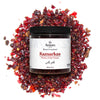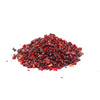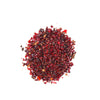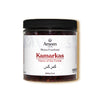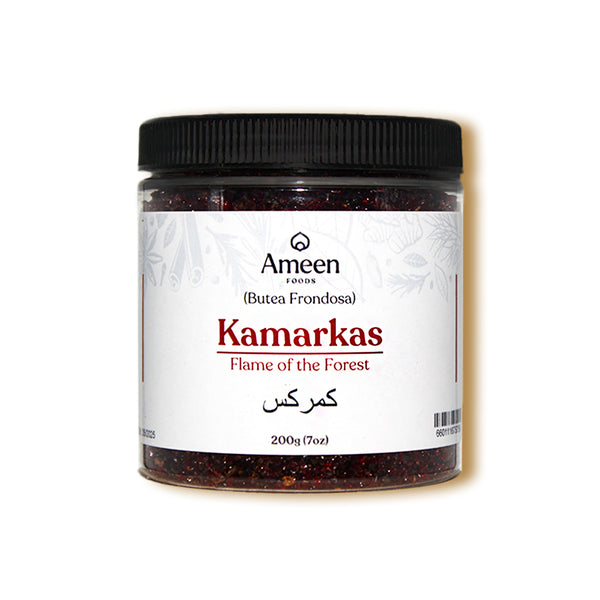Kamarkas, the resinous gum derived from the Butea monosperma tree—often referred to as the Flame of the Forest—is a striking natural ingredient rooted in the rich culinary and cultural traditions of the Indian subcontinent. Known for its deep reddish hue and slightly earthy flavor, Kamarkas is treasured for its versatility in both kitchen recipes and traditional routines.
Culinary Uses of Kamarkas
Kamarkas is commonly used in:
-
Traditional Sweets & Recipes – Often featured in postnatal preparations like panjiri and laddoos, where it adds both texture and depth.
-
Thickening Agent – Used in stews, soups, and regional Indian dishes for its ability to enrich consistency naturally.
-
Infusions – Sometimes steeped or boiled for use in traditional food-based blends.
Its naturally crisp texture becomes chewy when cooked, offering a unique mouthfeel and visual richness to recipes.
Why Choose Kamarkas?
-
Flavor Profile: Mildly acrid with subtle sweetness.
-
Color & Texture: Deep red or amber pieces that soften when soaked or cooked.
-
Cultural Importance: Long regarded in traditional kitchens and rituals, especially in postpartum care and festive dishes.
-
Multi-Purpose: Suitable for both culinary preparations and traditional home-based applications.
Botanical and Cultural Identity
-
Botanical Name: Butea monosperma
-
Common Names:
-
English: Flame of the Forest Gum, Palash Gum, Bengal Kino
-
Hindi: Kamarkas, Palash, Dhak
-
Urdu: کمرکس (Kamarkas)
-
Sanskrit: Kimshuka, Kinshuk
-
Punjabi: Dhataki
-
Gujarati: Kesudo
-
Tamil: Porasu
-
Marathi: Dhak
-
Telugu: Moduga
-
Bengali: Polash
-
Discover the Traditional Essence of Kamarkas
With its deep roots in culinary heritage and cultural rituals, Kamarkas brings color, texture, and tradition to your pantry. Whether enhancing authentic recipes or celebrated in timeless kitchen customs, this resinous gum continues to hold a special place in natural food culture.

